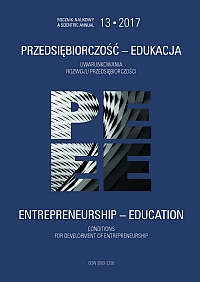Leisure and Sport Facility Base and its Functioning in an Industrial City (Based on the Example of Gliwice)
DOI:
https://doi.org/10.24917/20833296.13.10Keywords:
condition of human capital, Gliwice, leisure, physical activity, sport, youthAbstract
The issues of human health are presently more commonly perceived as the factors determining the condition of human capital. In the theory of capital characterisation platforms, health is seen as one of the five most vital factors constituting this condition, accompanied by education, study or high technology. Health is, however, of a specific character as it results mainly from the lifestyle preferences. In the latter, physical activity must not be ignored. In view of the above, it is essential that both, individual and social/institutional actions are assessed with respect to how they promote a lifestyle which would nurture organisms’ biological activity and contribute to sustaining their vital functions. An issue arises of how to enforce healthy lifestyle involving physical activity starting with an early childhood and among the school youth in particular. As shown in Nowak’s study (2009), more than half of the surveyed Polish management staff have responded that their health-promoting behaviours are related to the physical activity in school years. The above mentioned activity is the subject of the present study. An attempt has been made to show both the physical activity observed among the youth attending the schools of the Gliwice area, as well as its versatile preconditions. Answers to the following questions have been searched for:
- how to assess the contemporary condition of the leisure and sport facility base in view of the city history in respect to, both, its volume and qualitative structure,
- what is the leisure and sport facility base availability to the residents of Gliwice considering its location in the urban space of Gliwice, as well as economic affordability of particular services,
- what is the condition of physical activity among the youth attending schools in the Gliwice area and how personal, economic and availability of facilities factors contribute to it.
The study has been written based on own research (interviews with the people responsible for sport and recreation in the years of the People’s Republic of Poland, surveys conveyed among the students of Gliwice secondary schools and the data obtained from the Gliwice City Council website which resulted in collecting the materials descriptive of the Gliwice leisure and sport facility base in the post-war period and presently and evaluating the level of physical activity of the youth attending local schools.
References
Całka, E. (1986). Sport – rekreacja – turystyka. Zeszyty Gliwickie, 17, 369–383.
Duś, E. (1990). Ogrodnictwo działkowe w Górnośląskim Okręgu Przemysłowym. Geographia. Studia et Dissertationes, 14, 93–117.
Kowalczyk, A., Derek, M. (2010). Zagospodarowanie turystyczne. Warszawa: Wydawnictwo Naukowe PWN.
Kurek, W. (red.). (2007). Turystyka. Warszawa: Wydawnictwo Naukowe PWN.
Mogiła-Lisowska, J. (2010). Rekreacyjna aktywność ruchowa Polaków – uwarunkowania i styl uczestnictwa. Studia i Monografie. Warszawa: Akademia Wychowania Fizycznego w Warszawie.
Mroczkowska, D. (red.). (2011). Czas wolny. Refleksje, dylematy, perspektywy. Warszawa: Wydawnictwo Difin.
Nowak, F.P. (2010). Aktywność fizyczna oraz inne zachowania zdrowotne w stylu życia menedżerów. Opole: Wydawnictwo Politechniki Opolskiej.
Pawlikowska-Piechotka, A. (2009). Zagospodarowanie turystyczne i rekreacyjne. Gdynia: Wydawnictwo Novae Res.
Petryszyn, J. (2002). Rozwój demograficzny dużych miast Polski. W: J. Słodczyk (red.), Demograficzne i społeczne aspekty rozwoju miast. Opole: Wydawnictwo Uniwersytetu Opolskiego.
Stolarczyk, D., Bittner, K. (red.). (2015). W kręgu kultury PRL. Sport. Poznań: Wydawnictwo Uniwersytetu Adama Mickiewicza w Poznaniu.
Szajnowska-Wysocka, A. (2002). Urbanizacja demograficzna Gliwic. W: J. Słodczyk (red.), Demograficzne i społeczne aspekty rozwoju miast. Opole: Wydawnictwo Uniwersytetu Opolskiego.
Szujecki, K. (2014). Życie sportowe w PRL. Warszawa: Wydawnictwo Bellona.
Wieczorek-Szymańska A. (2009). Koncepcja kapitału ludzkiego w teorii ekonomii – przegląd wybranych podejść. Studia i Prace Wydziału Nauk Ekonomicznych i Zarządzania, 17.
Wronowska, D. (2005). Koncepcje kapitału ludzkiego – ujęcie historyczne. W: D. Kopycińska (red.), Teoretyczne aspekty gospodarowania. Szczecin: Katedra Mikroekonomii Uniwersytetu Szczecińskiego.
Downloads
Published
How to Cite
Issue
Section
License
Articles are published under the terms of the Creative Commons License (CC BY-ND 4.0; Attribution– NoDerivs).

